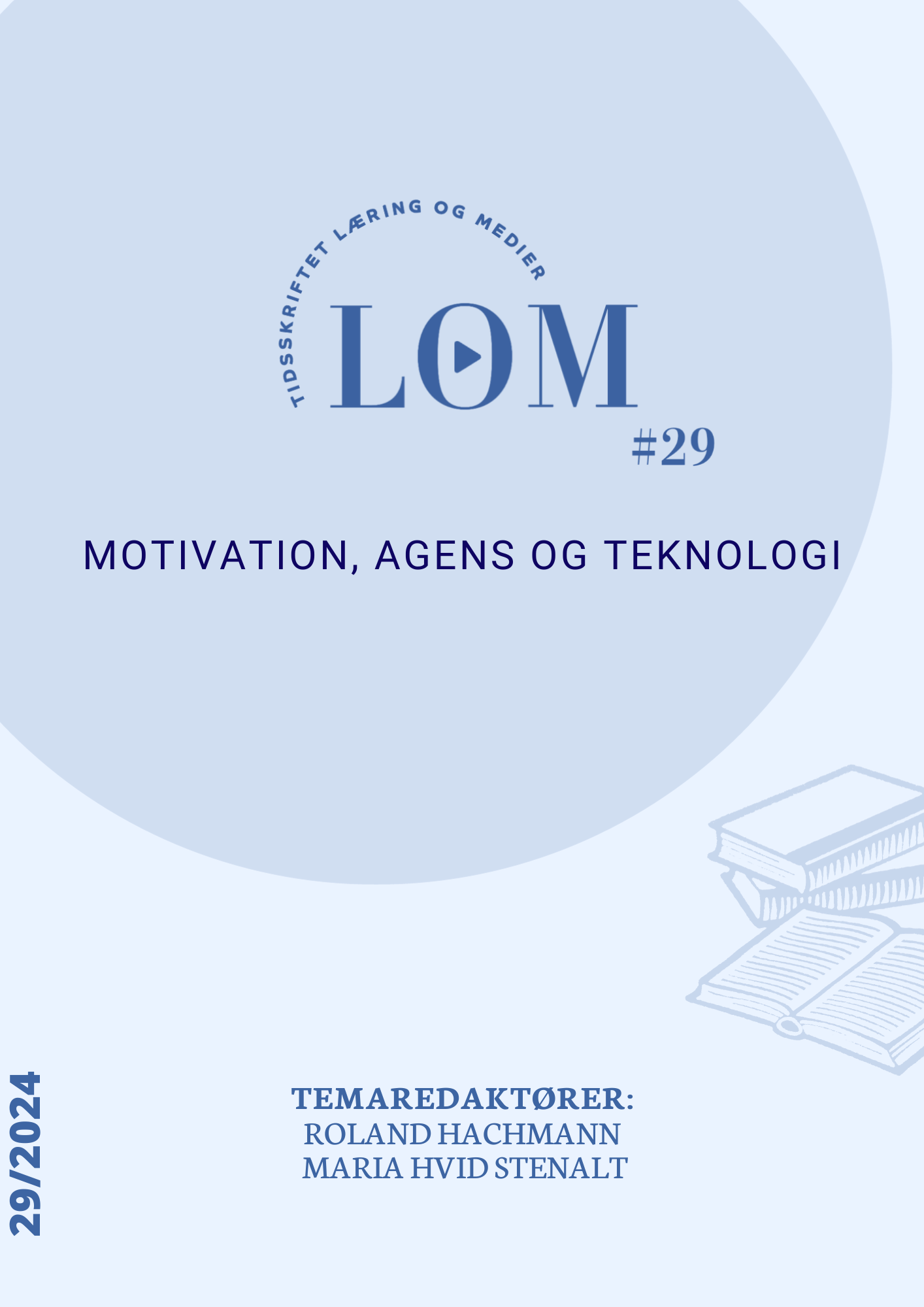The dialogic space of group work
Using Google Jamboard and convsersational cards and technology to support students' collaborative processes
DOI:
https://doi.org/10.7146/lom.v17i29.136461Keywords:
creativity, dialogue, group workAbstract
Group work is a well-known form of work in primary school, which has both learning opportunities and limitations. This applies not least when students have to collaborate to develop common ideas, where some students easily take control, while others may find it difficult to be heard. In this article, we analyze video observations of 5th and 6th grade students' use of physical conversation cards and the digital tool Google Jamboards to support their creative collaborative processes. Our theoretical starting point is an understanding of group work as a dialogic space for divergent and convergent idea development, which gives students the opportunity to open, expand and deepen their common understandings. At the same time, we are concerned with how the various tools can contribute to framing dialogue by offering students roles and exploratory questions. Our findings indicate that Google Jamboards are suitable for supporting preparation and creating an overview of ideas, while conversation cards can both strengthen students who find it difficult to take roles and participate in group work, and act as a help to keep the shared dialogic space open.
Downloads
References
Bakhtin, M. M. (1986). Speech Genres and Other Late Essays. University of Texas.
Braun, V., & Clarke, V. (2006). Using thematic analysis in psychology. Qualitative Research in Psychology, 3(2), 77-101. https://doi.org/10.1191/1478088706qp063oa
Dam-Christensen, E. (2021). Kritisk undersøgende samtaler i elevernes gruppearbejde i skolen: et didaktisk designeksperiment i udskolingselevers faglige gruppesamtaler i danskfaget. Ph.d.-afhandling. Syddansk Universitet.
Gynther, K., Christensen, O., & Petersen, T. B. (2012). Design-Based Research: introduktion til en forskningsmetode i udvikling af nye E-læringskoncepter og didaktisk design medieret af digitale teknologier. Læring Og Medier, 5(9), https://doi.org/10.7146/lom.v5i9.6140.
EVA (2020). Gruppearbejde i folkeskolen – Erfaringer og inspiration fra aktionslæring om gruppearbejde. Danmarks Evalueringsinstitut. Link: https://www.eva.dk/grundskole/gruppearbejde-folkeskolen-erfaringer-aktionslaering
Gregersen, C. & Mikkelsen, S. S. (2007). Ingen arme, ingen kager. En Bourdieu-inspireret praksisanalyse af skolens sociale sortering. Unge Pædagoger.
Howe, C., & Abedin, M. (2013). Classroom dialogue: A systematic review across four decades of research. Cambridge Journal of Education, 43(3), 325-356. https://doi.org/10.1080/0305764X.2013.786024
Jandrić, P., Knox, J., Besley, T., Ryberg, T., Suoranta, J., & Hayes, S. (2018). Postdigital science and education. Educational Philosophy and Theory, 50(10), 893-899. https://doi.org/10.1080/00131857.2018.1454000
Kagan, S., & Kagan, S. (1994). Cooperative Learning. Kagan.
Mercer, N., Wegerif, R., & Major, L. (Eds.). (2019). The Routledge International Handbook of Research on Dialogic Education. Routledge.
Mercer, N., Hennessy, S., & Warwick, P. (2019). Dialogue, thinking together and digital technology in the classroom: Some educational implications of a continuing line of inquiry. International Journal of Educational Research, 97, 187-199. https://doi.org/10.1016/j.ijer.2017.08.007
OECD (2019). TALIS 2018 results (Volume I): Teachers and school leaders as lifelong learners. https://doi.org/10.1787/1d0bc92a-en
Pifarré, M. (2019). Using interactive technologies to promote a dialogic space for creating collaboratively: A study in secondary education. Thinking Skills and Creativity, 32, 1-16. https://doi.org/10.1016/j.tsc.2019.01.004
Rasmussen, M. D. (2021). Potentialer for dialogiske rum i litteraturundervisningens gruppearbejde. I: Jølle, L., Larsen, A.S., Otnes, H. & Aa, L.I. (red.). Morsmålsfaget som fag og forskningsfelt i Norden (s. 108-125). Universitetsforlaget. https://doi.org/10.18261/9788215050997-2021-07
Rasmussen, I. & Rødnes, K. A. (2020). Dialog + microblogging = flerstemmighed? I: O. Dysthe, I. J. Ness & P. O. Kirkegaard (red.). Dialogisk pædagogik, kreativitet og læring, s. 217-248. Klim.
Wegerif, R. (2020). Undervisning som åbning, udvidelse og uddybning af dialogisk(e) rum. I: O. Dysthe, I. J. Ness & P. O. Kirkegaard (red.). Dialogisk pædagogik, kreativitet og læring, s. 93-112. Klim.
Wegerif, R., & Major, L. (2023). The Theory of Educational Technology: Towards a dialogic foundation for design. Routledge.
Downloads
Published
How to Cite
Issue
Section
License
Copyright (c) 2024 Thorkild Hanghøj, Dorte Bygebjerg Kristensen, Jakob Kyu Schønemann, Lars Bøge Eskildsen

This work is licensed under a Creative Commons Attribution-NonCommercial-NoDerivatives 4.0 International License.

Articles published in the Journal of Learning and Media are licensed under a Creative Commons Attribution-NonCommercial-NoDerivatives 3.0 Unported Licens.
Authors retain copyright and grant the journal right of first publication; simultaneously articles are licensend under the Creative Commons Attribution license: Attribution-NonCommercial-NoDerviatives (by-nc-nd). Read about this license at https://creativecommons.org/licenses/by-nc-nd/3.0/
---
At LOM.dk, you will also find articles from the discontinued Journal for the Continuing and Further Education of the Danish Universities (UNEV). Note that special rules apply to UNEV articles:
It is the authors and any other copyright holder who have the copyright of articles published under the auspices of UNEV, and access to the articles is contingent on users acknowledging and complying with the associated legal guidelines:
- Users may download and print one copy of any UNEV publication for private studies or research.
- The redistribution of articles or the use of these for revenue-funded activities or commercial purposes are not allowed.
- It is not allowed to distribute the URLs of UNEV articles.


